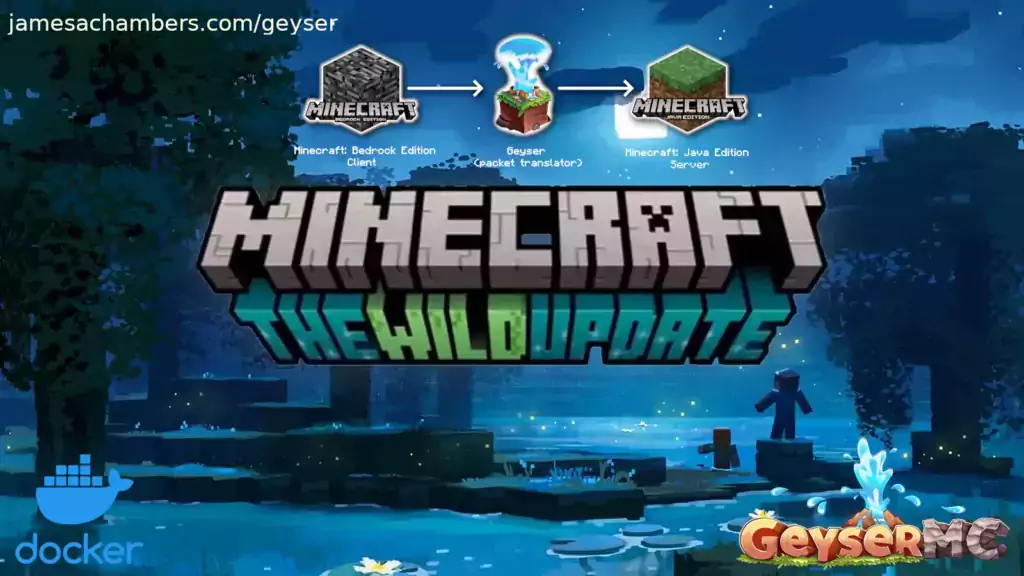
This is a new Docker container to automatically set up and run a Minecraft server that both Java and Bedrock players can connect to! This allows everyone to play on your server no matter which edition of Minecraft you are using. It uses the Geyser and Floodgate plugins to accomplish this.
Since it uses the Paper Minecraft server it also supports any additional plugins that are compatible with Paper / Spigot. This gives you the ability to do many things that are currently impossible to do in Bedrock if you are hosting the official Bedrock dedicated server.
It is fully compatible with my Paper Minecraft Java Server Container and you can swap between these two containers without changing any configuration.
The official GitHub page is located here.
The Docker Hub page for the container is located here.
It’s now possible to convert your worlds between Bedrock and Java versions. Check out my guide on Chunker here for more information.
Features
- Sets up fully operational Minecraft server that allows both Java and Bedrock clients to connect
- Runs the highly efficient “Paper” Minecraft server
- Runs Geyser to allow Bedrock clients to connect and Floodgate to allow them to authenticate with their Bedrock credentials to a Java server
- Plugin support for Paper / Spigot / Bukkit
- Uses named Docker volume for safe and easy to access storage of server data files (which enables more advanced Docker features such as automatic volume backups)
- Installs and configures OpenJDK 18
- Automatic backups to minecraft/backups when server restarts
- Full logging available in minecraft/logs folder
- Updates automatically to the latest version when server is started
- Runs on all Docker platforms including Raspberry Pi
Usage
First you must create a named Docker volume. This can be done with:
docker volume create yourvolumename
Now you may launch the server and open the ports necessary with one of the following Docker launch commands.
With default ports:
docker run -it -v yourvolumename:/minecraft -p 25565:25565 -p 19132:19132/udp -p 19132:19132 --restart unless-stopped 05jchambers/legendary-minecraft-geyser-floodgate:latest
With custom ports:
docker run -it -v yourvolumename:/minecraft -p 12345:12345 -e Port=12345 -p 54321:54321/udp -p 54321:54321 -e BedrockPort=54321 --restart unless-stopped 05jchambers/legendary-minecraft-geyser-floodgate:latest
With a custom Minecraft version (add -e Version=1.X.X, must be present on Paper’s API servers to work):
docker run -it -v yourvolumename:/minecraft -p 25565:25565 -p 19132:19132/udp -p 19132:19132 -e Version=1.17.1 --restart unless-stopped 05jchambers/legendary-minecraft-geyser-floodgate:latest
With a maximum memory limit in megabytes (optional, prevents crashes on platforms with limited memory, -e MaxMemory=2048):
docker run -it -v yourvolumename:/minecraft -p 25565:25565 -p 19132:19132/udp -p 19132:19132 -e MaxMemory=2048 --restart unless-stopped 05jchambers/legendary-minecraft-geyser-floodgate:latest
Using a custom timezone:
docker run -it -v yourvolumename:/minecraft -p 25565:25565 -p 19132:19132/udp -p 19132:19132 -e TZ="America/Denver" --restart unless-stopped 05jchambers/legendary-minecraft-geyser-floodgate:latestSkipping backups on a certain folder:
docker run -it -v yourvolumename:/minecraft -p 25565:25565 -p 19132:19132/udp -p 19132:19132 -e NoBackup="plugins" --restart unless-stopped 05jchambers/legendary-minecraft-geyser-floodgate:latestSkipping permissions check:
docker run -it -v yourvolumename:/minecraft -p 25565:25565 -p 19132:19132/udp -p 19132:19132 -e NoPermCheck="Y" --restart unless-stopped 05jchambers/legendary-minecraft-geyser-floodgate:latestChange number of backups:
docker run -it -v yourvolumename:/minecraft -p 25565:25565 -p 19132:19132/udp -p 19132:19132 -e BackupCount=1 --restart unless-stopped 05jchambers/legendary-minecraft-geyser-floodgate:latestConfiguration / Accessing Server Files
The server data is stored where Docker stores your volumes. This is typically a folder on the host OS that is shared and mounted with the container. I’ll give the usual locations here but if you’re having trouble just do some Googling for your exact platform and you should find where Docker is storing the volume files.
You can find your exact path by typing:
docker volume inspect yourvolumenameThis will give you the fully qualified path to your volume like this:
{
"CreatedAt": "2022-05-09T21:08:34-06:00",
"Driver": "local",
"Labels": {},
"Mountpoint": "/var/lib/docker/volumes/yourvolumename/_data",
"Name": "yourvolumename",
"Options": {},
"Scope": "local"
}
On Linux it’s typically available at:
/var/lib/docker/volumes/yourvolumename/_data
On Windows it’s at
C:\ProgramData\DockerDesktop
but may be located at something more like
\wsl$\docker-desktop-data\version-pack-data\community\docker\volumes\
if you are using WSL (Windows Subsystem for Linux).
On Mac it’s typically
~/Library/Containers/com.docker.docker/Data/vms/0/
If you are using Docker Desktop on Mac then you need to access the Docker VM with the following command first:
screen ~/Library/Containers/com.docker.docker/Data/com.docker.driver.amd64-linux/ttyYou can then normally access the Docker volumes using the path you found in the first step with docker volume inspect.
Most people will want to edit server.properties. You can make the changes to the file and then restart the container to make them effective.
Backups are stored in the “backups” folder
Log files with timestamps are stored in the “logs” folder.
Plugin Support for Paper / Spigot / Bukkit
This is a “Paper” Minecraft server which has plugin compatibility with Paper / Spigot / Bukkit.
Installation is simple. There is a “plugins” folder on your Docker named volume.
Navigate to your server files on your host operating system (see accessing server files section if you don’t know where this is) and you will see the “plugins” folder.
You just need to drop the extracted version of the plugin (a .jar file) into this folder and restart the container. That’s it!
Some plugins have dependencies so make sure you read the installation guide first for the plugin you are looking at.
A popular place to get plugins is: dev.bukkit.org
Troubleshooting Note – Oracle Virtual Machines
A very common problem people have with the Oracle Virtual Machine tutorials out there that typically show you how to use a free VM is that the VM is much more difficult to configure than just about any other product / offering out there.
It is because there are several steps you need to take to open the ports on the Oracle VM. You need to both:
- Set the ingress ports (TCP/UDP) in the Virtual Cloud Network (VCN) security list
- *and* set the ingress ports in a Network Security Group assigned to your instance
Both of these settings are typically required before you will be able to connect to your VM instance. This is purely configuration related and has nothing to do with the script or the Minecraft server itself.
I do not recommend this platform due to the configuration difficulty but the people who have gone through the pain of configuring an Oracle VM have had good experiences with it after that point. Just keep in mind it’s going to be a rough ride through the configuration for most people.
Troubleshooting Note – Hyper-V
There is a weird bug in Hyper-V that breaks UDP connections on the Minecraft server. The easy workaround for this is that you have to use a Generation 1 VM with the Legacy LAN network driver.
There is a second fix that was shared by bpsimons here. For that fix you need to install ethtool first with sudo apt install ethtool. Next in your /etc/network/interfaces file add “offload-tx off” to the bottom as the issue appears to be with TX offloading.
Here’s an example:
# The primary network interface auto eth0 iface eth0 inet static address 192.168.1.5 netmask 255.255.255.0 network 192.168.1.0 broadcast 192.168.1.255 gateway 192.168.1.1 offload-tx off
This can also be done non-persistently with the following ethtool command:
ethtool -K eth0 tx offAdditional Support
The comments section right here is the best place for support. The second best place is the GitHub issues section.
I will add additional documentation based on what problems people are running into / questions people are asking because right now I’m not really sure what those will be yet. Definitely let me know if you need any of these things!

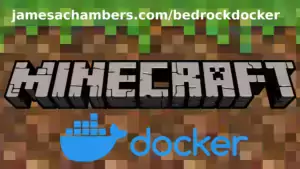

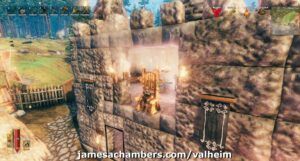
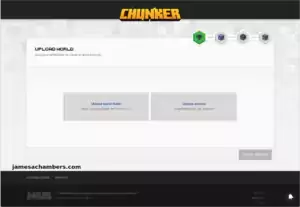
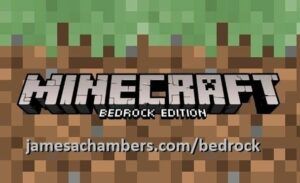
I’ve been using this docker image for quite some time, updating regularly. My run command doesn’t seem to be pulling the latest version of the script though.
My command:
docker run -it -v yourvolumename:/minecraft -p 25565:25565 -p 19132:19132/udp -p 19132:19132 -e MaxMemory=10240 -e BackupCount=5 -e TZ=”America/Vancouver” -e Version=1.21.4 –restart unless-stopped 05jchambers/legendary-minecraft-geyser-floodgate:latest
I can tell, because it isn’t creating the “minecraft” user at the start of the script, and it’s still using the old api links for the latest paper version.
Copy and pasted from output:
Paper Minecraft Java Server Docker + Geyser/Floodgate script by James A. Chambers
Latest version always at https://github.com/TheRemote/Legendary-Java-Minecraft-Geyser-Floodgate
Don’t forget to set up port forwarding on your router! The default port is 25565 and the Bedrock port is 19132
Port used: 25565
Bedrock port used: 19132
Taking ownership of all server files/folders in /minecraft…
Complete
Backing up server (all cores) to cd minecraft/backups folder
…
…
Updating to most recent paperclip version …
/scripts/start.sh: line 145: please join our Discord.Downloads APIDocumentation is available here.
Maven RepositoryDocumentation is available here.
+ 0: syntax error in expression (error token is “join our Discord.Downloads APIDocumentation is available here.
Maven RepositoryDocumentation is available here.
+ 0”)
…
What do I need to do to update the script?
Dear all,
as I am new to the community I have a very basic question.
Can I actually (when everything is set up and properly running) connect a JAVA paper 1.21.4 server running with James Geyser docker with an IPAD Bedrock 1.21.30 client?
Paper 1.21.4 Server is up and running and confirmed to be online by https://mcping.me/ (as a JAVA server. not as a Bedrock server though).
However in my Ipad with neither port 25565 nor 19132 it is shown as online. Any tips?
Hi Joe, if you successfully set up the docker server, it includes the Geyser plugin, which allows Bedrock clients to connect to the server. Make sure your ports are open.
Hi James, forgive me, I’m very new to Linux and containers, and I thought this would be a good thing to try and learn. I run the command and it appears I don’t have permissions to open the /var/lib/docker file. I added myself to the docker group and still no luck.
I tried to downgrade the server to an older version 1.21.1 but it keeps updating to 1.21.4.
The env is set via Version: 1.21.1
Is there anything I can change so the server starts with the downgraded version?
Log:
[bootstrap] Loading Paper 1.21.4-68-main@9298f59 (2024-12-30T20:42:05Z) for Minecraft 1.21.4
Regards
Benny
Hey Benny,
This must have been frustrating to troubleshoot but it should be fixed now. The issue is that the Paper API URLs have changed. Therefore it was failing to download the older version of the server you were requesting and was just falling back to what it already had.
If you try with the new version it should respect your version parameter again!
Hello James
Having some problems starting the docker image. I get the message :“…Starting Minecraft server…
Error: Unable to access jarfile /minecraft/paperclip.jar…
Any suggestions?
Best regards
Michael
I’m getting the same error.
Could you give the latest version a try?
I’m getting an error running the docker.
Script is running as root, switching to 'minecraft' user...Creating 'minecraft' user...
Paper Minecraft Java Server Docker + Geyser/Floodgate script by James A. Chambers
Latest version always at https://github.com/TheRemote/Legendary-Java-Minecraft-Geyser-Floodgate
Don't forget to set up port forwarding on your router! The default port is 25565 and the Bedrock port is 19132
Port used: 25565
Bedrock port used: 19132
Taking ownership of all server files/folders in /minecraft...
Complete
Updating to most recent paperclip version ...
/scripts/start.sh: line 159: please join our Discord.Downloads APIDocumentation is available here.
Maven RepositoryDocumentation is available here.
+ 0: syntax error in expression (error token is "join our Discord.Downloads APIDocumentation is available here.
Maven RepositoryDocumentation is available here.
+ 0")
Starting Minecraft server...
Error: Unable to access jarfile /minecraft/paperclip.jar
It looks like Paper changed the API URLs again. This has now been fixed. Go ahead and try again with the latest version!
THX for updating!
Dear all,
as I am new to the community I have a very basic question. Can I actually (when everything is set up and properly running) connect a JAVA paper 1.21.4 server running with James Geyser docker with an IPAD Bedrock 1.21.30? Paper 1.21.4 Server is up and running and confirmed to be online by https://mcping.me/ (as a JAVA server, not as a Bedrock server though). However in Ipad with neither port 25565 nor 19132 it is shown as online. Any tips?
Hey Joe,
The most common reason for this is that your WiFi network is not bridged with your LAN network. This is called double NAT. An easy way to tell is if your wired network has an IP with 192.168.1.X as an example and your wireless network gives out 192.168.50.X or 10.1.1.X. They are different networks.
Another thing to check for is UDP vs TCP. Bedrock prefers UDP while Java is completely TCP. You may want to check your firewall ruies and make sure you are forwarding both TCP and UDP traffic rather than one or the other. Hopefully that helps!